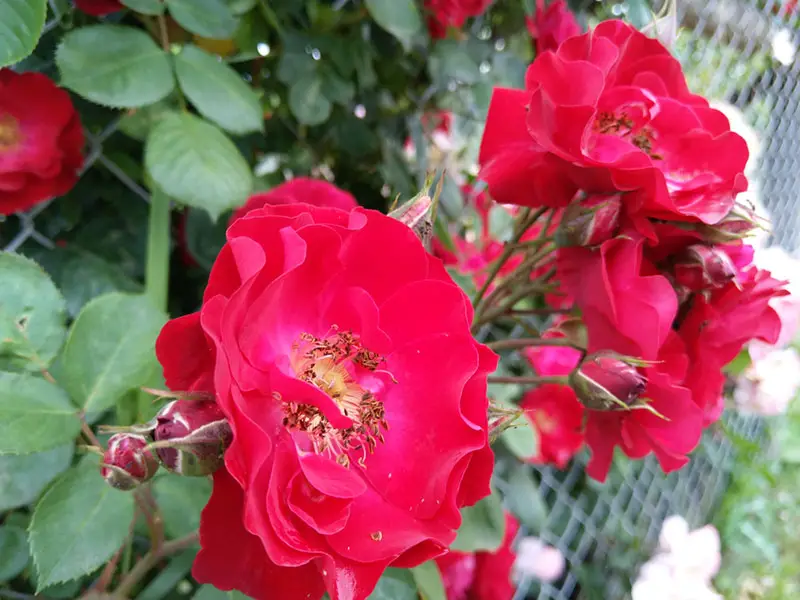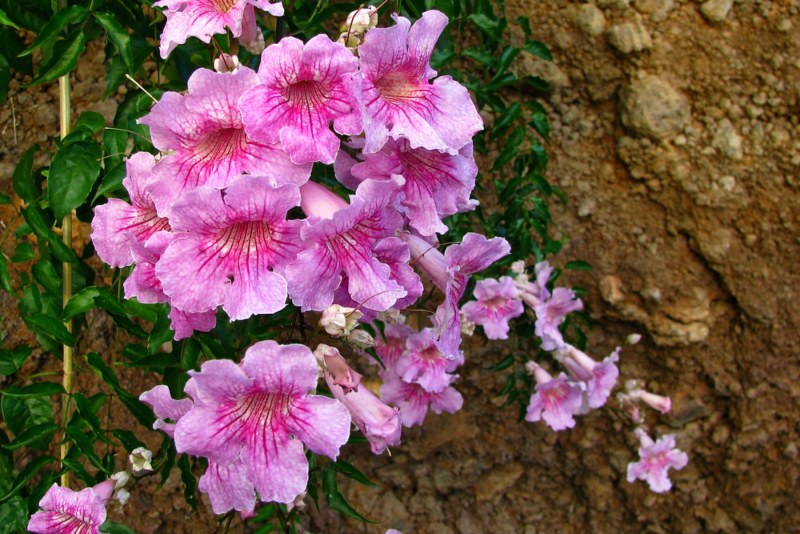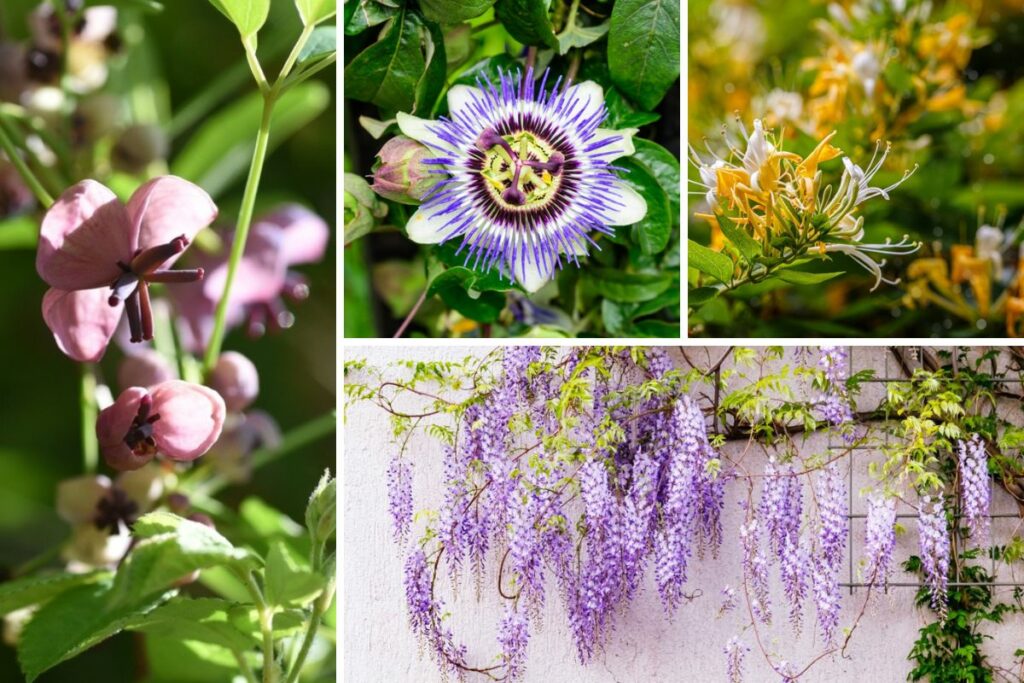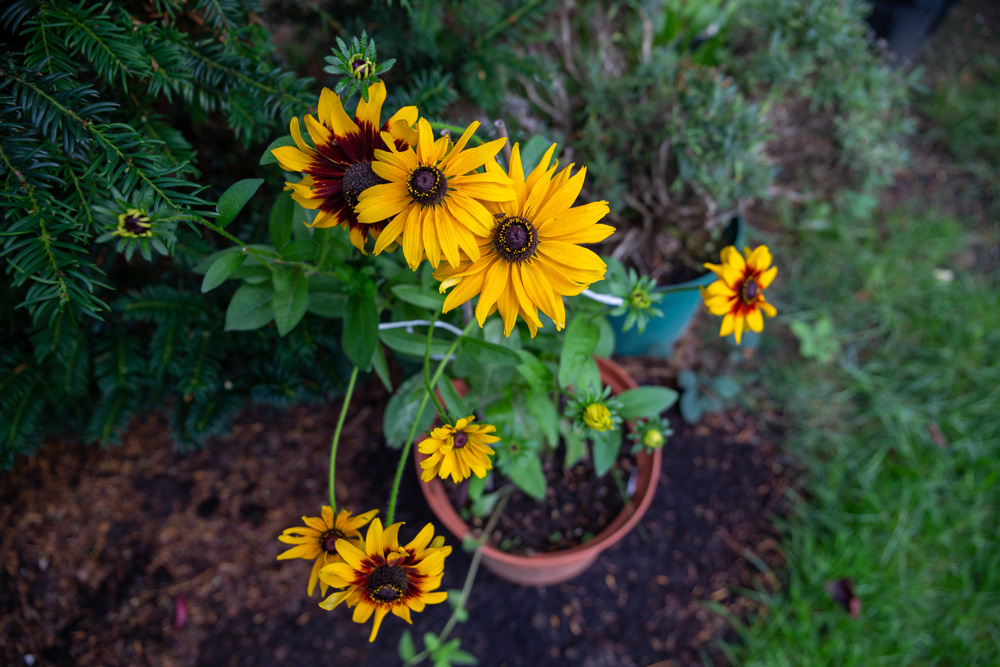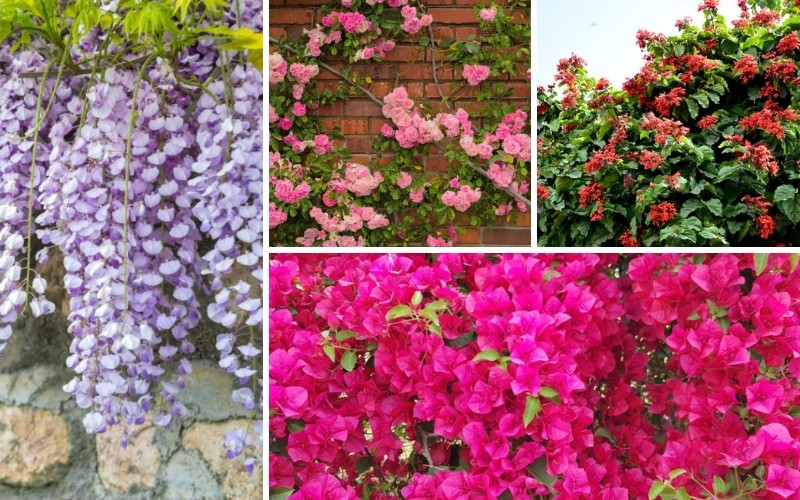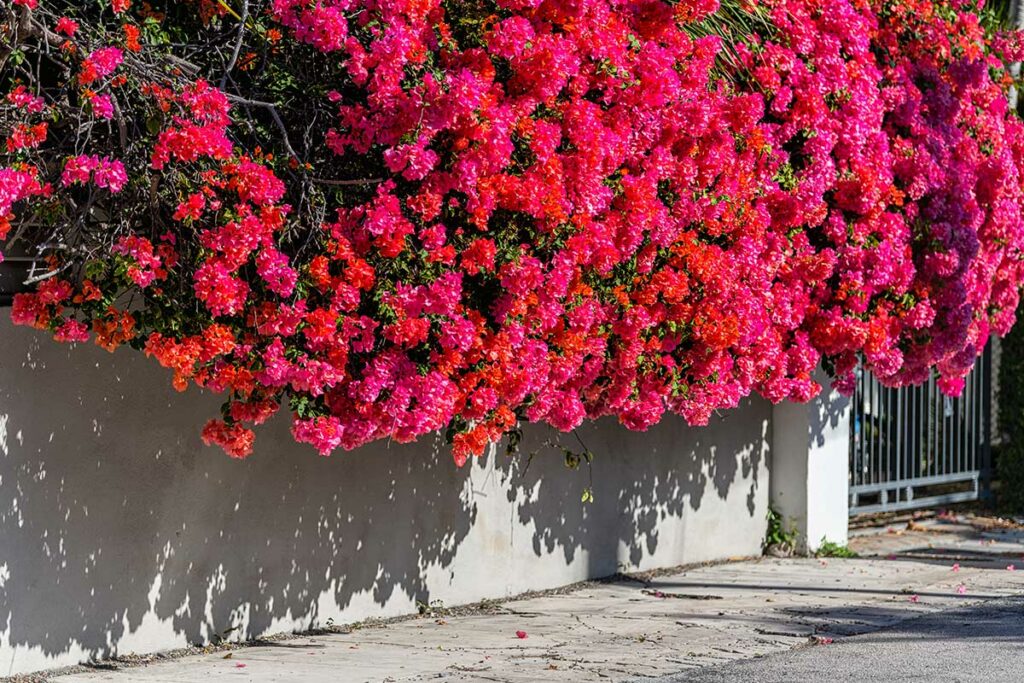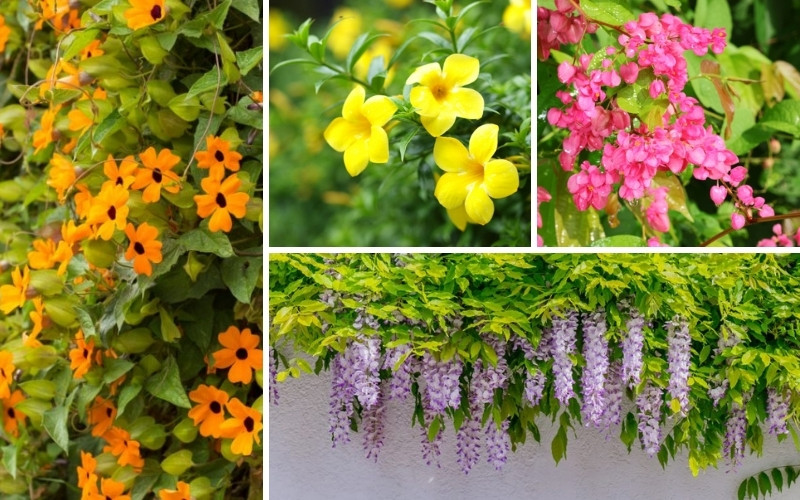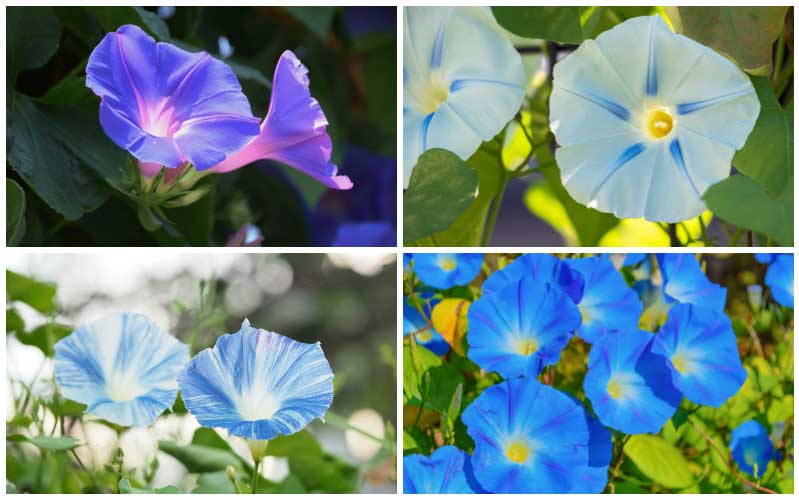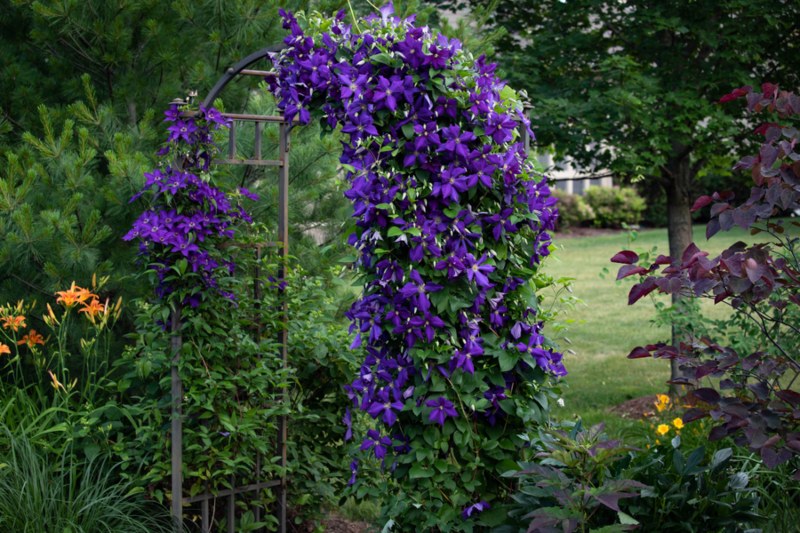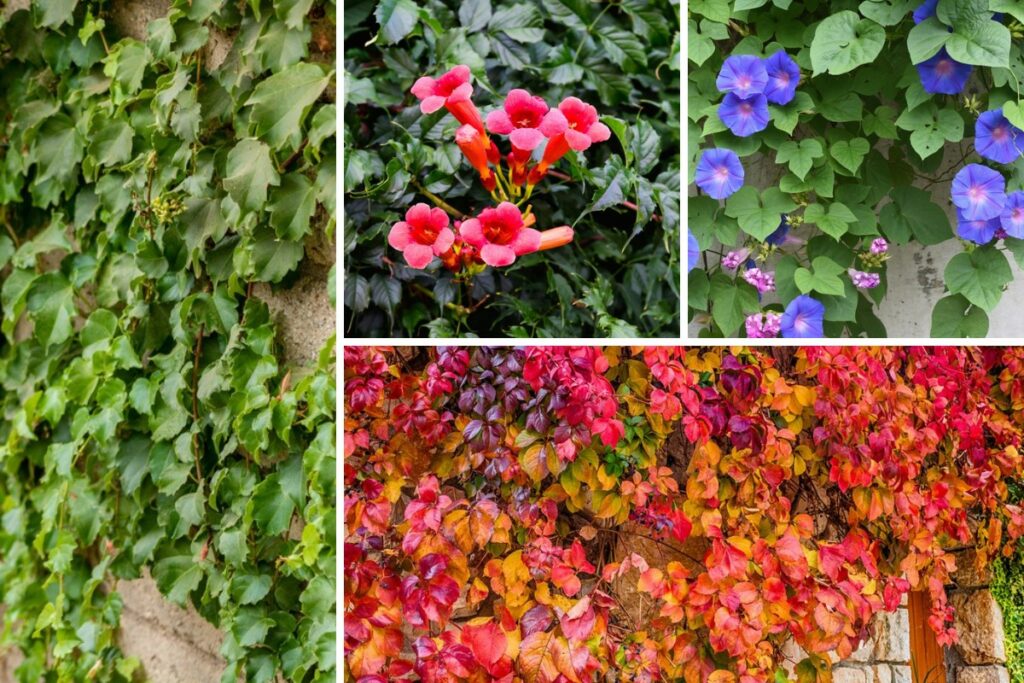
Vines add beauty, shade, and fragrance to your landscape. They also attract pollinators and can transform the look of a hardscape element like a fence, pergola, or trellis.
But which vines can survive the weather of Wisconsin?
We’ve got your back because this article will tell you about the 10 best Wisconsin vines and how to grow them in your outdoor space.
When you’re considering vines or trailing plants to grow in Wisconsin, you need to think about plants that can tolerate being in the sun for long periods without getting burned.
At the same time, these plants should handle the cold winters in the Badger State.
Here are 10 vines that thrive in Wisconsin.
1. Sweet Autumn Clematis
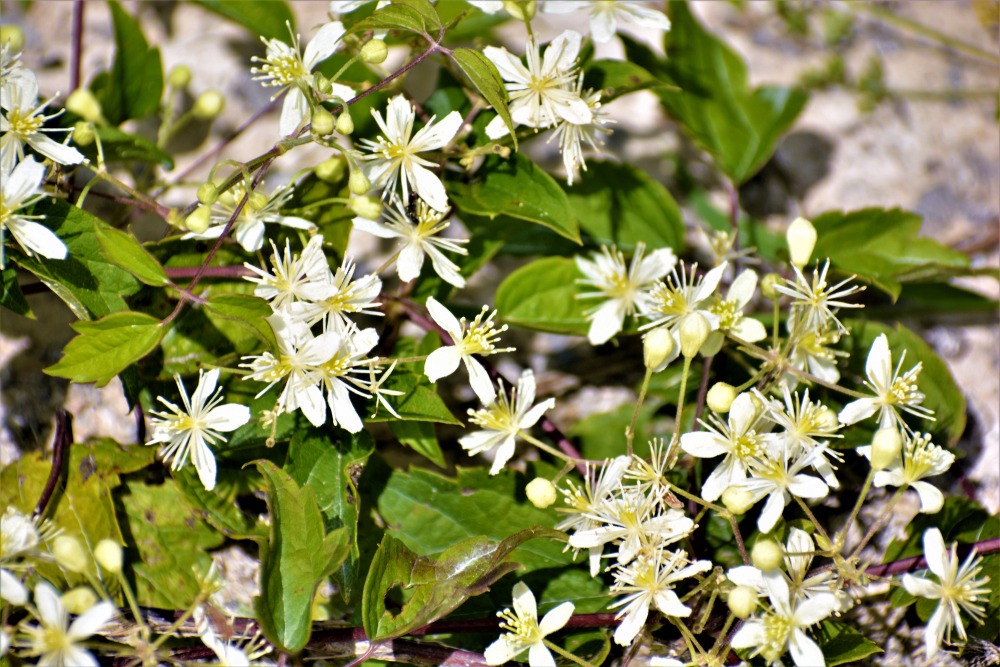
Add beauty and fragrance to your pergola or trellis with the sweet autumn clematis. It’s a fast-growing vine that gains a few feet of length yearly, sometimes becoming 30 feet long. So, it needs to be controlled because it can become invasive. It’s also toxic to humans and pets.
The sweet autumn clematis has shiny dark green leaves and grows tiny white flowers that look like fleece when in bloom. The flowers start blooming in late summer and stay in bloom till fall, and then turn to fuzzy seed heads that don’t look less beautiful.
This perennial vine thrives in USDA zones 4 to 9 and can tolerate some shade. It has average watering needs and can survive in less-than-perfect soil conditions.
2. Boston Ivy
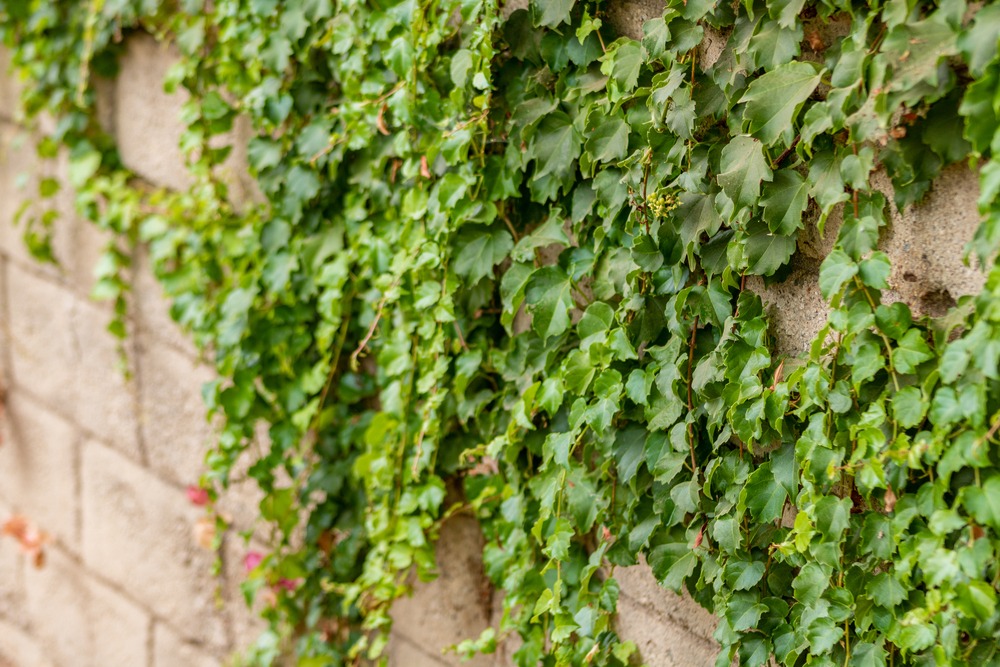
Boston ivy is a hardy vine that needs regular pruning because it can damage structures if left unsupervised. The red color of the foliage adds magic to your spring garden and the leaves turn green in summer.
During the summer months, Boson ivy grows clusters of greenish-white flowers that quickly turn into berries that birds love. Then, in the fall, the foliage becomes red again.
Boston ivy thrives in USDA zones 4 to 8, sometimes extending for more than 50 feet. It can tolerate full shade, but some sun is essential to encourage the red fall color. It withstands urban pollution and many soil conditions but needs more watering during its first year.
3. Hardy Kiwi Vine
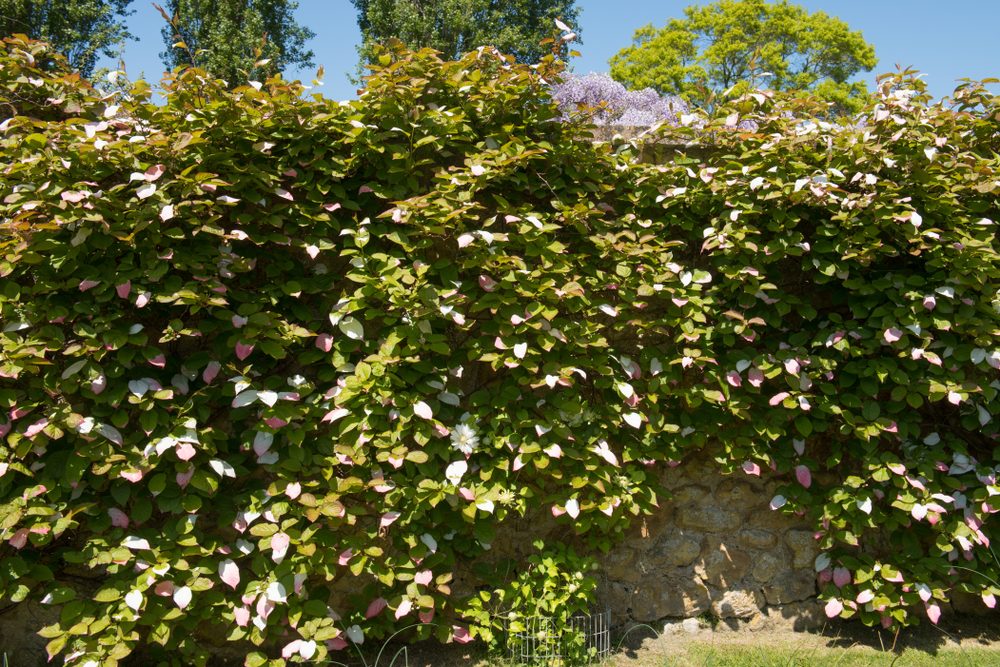
Not only does the hardy kiwi vine tolerate the weather of Wisconsin, but it also produces edible fruit, although it’s smaller than the one produced by the warm weather variety. This vine grows to be about 30 feet long, with heart-shaped foliage and fruits that can be eaten without peeling.
The hardy kiwi vine is better planted in spring after the last frost. However, it takes between three to nine years to grow fruits.
It thrives in USDA zones 3 to 9 in rich loamy soil and requires continuous watering, with full sunlight, to encourage spring blooming. Too much shade won’t kill the plant but will affect the number of blooms and fruits.
4. Trumpet Vine
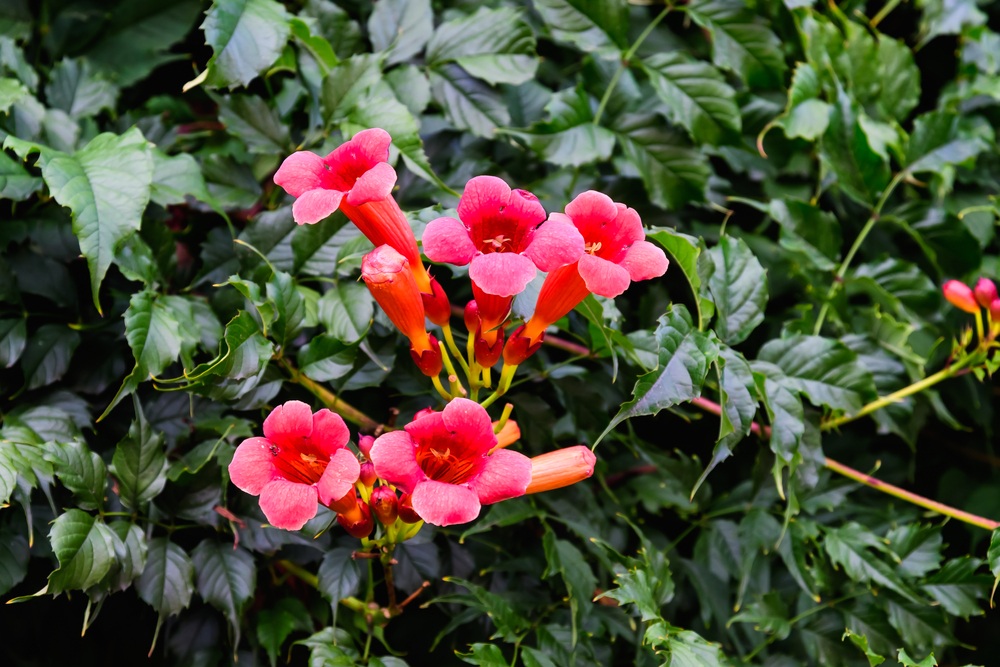
Don’t be fooled by the gorgeous dark green foliage of the trumpet vine because it’s mildly toxic to people and pets. The elliptical leaves grow to be about 15 inches long, and the trumpet-shaped flowers bloom in summer in shades of yellow, orange, and red. The flowers attract pollinators to your garden and then turn into seed capsules.
The trumpet vine usually extends up to 40 feet and is generally planted in spring or fall. It can become invasive because it has a fast-growing rate.
It thrives in USDA zones 4 to 9 and requires watering only during periods of drought. It doesn’t need regular fertilization and can tolerate various soil conditions. Exposing the vine to at least six hours of bright sunlight will boost flowering.
5. American Bittersweet
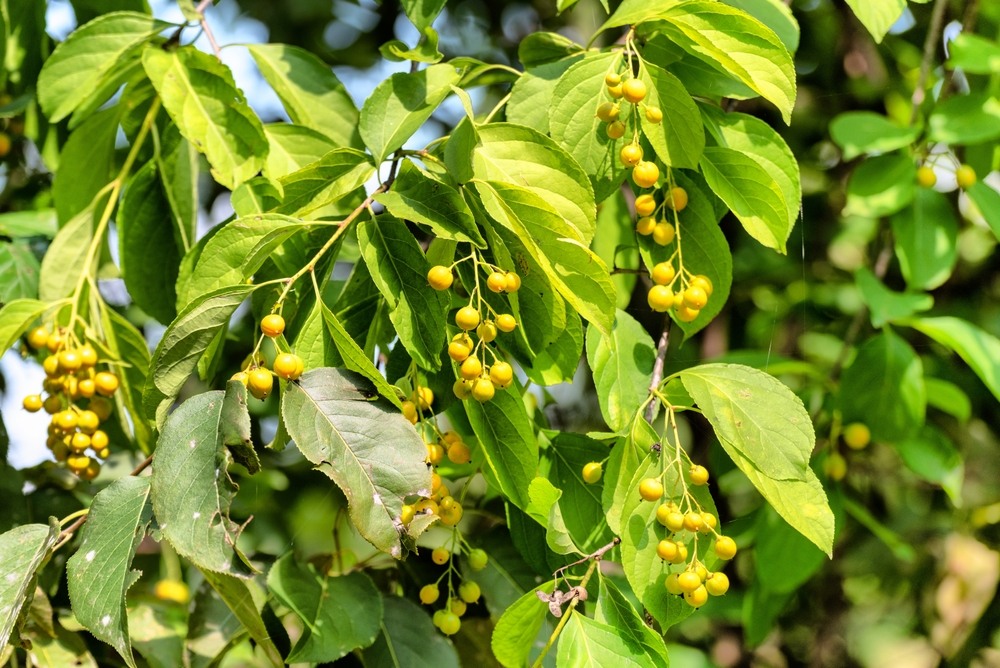
This bittersweet variety is native to Wisconsin and can extend for more than 30 feet. American bittersweet has a fast-growing rate, attaching itself to arbors, fences, and trellises, and this woody vine can twine without any support and kill other plants by restricting their growth.
It grows butterfly-attracting yellow-greenish flowers in the spring, and they usually go unnoticed if it weren’t for their sweet fragrance. Then, in the fall, the orange fruits appear. Yet, you need to grow female and male plants for fertilization to happen. These flowers are toxic to humans, but birds love them, and they’re long-lasting when kept indoors.
The American bittersweet grows in USDA zones 3b to 8 and has minimum water requirements. It can tolerate partial shade and prefers dry to moist, well-draining soil.
6. Climbing Hydrangea
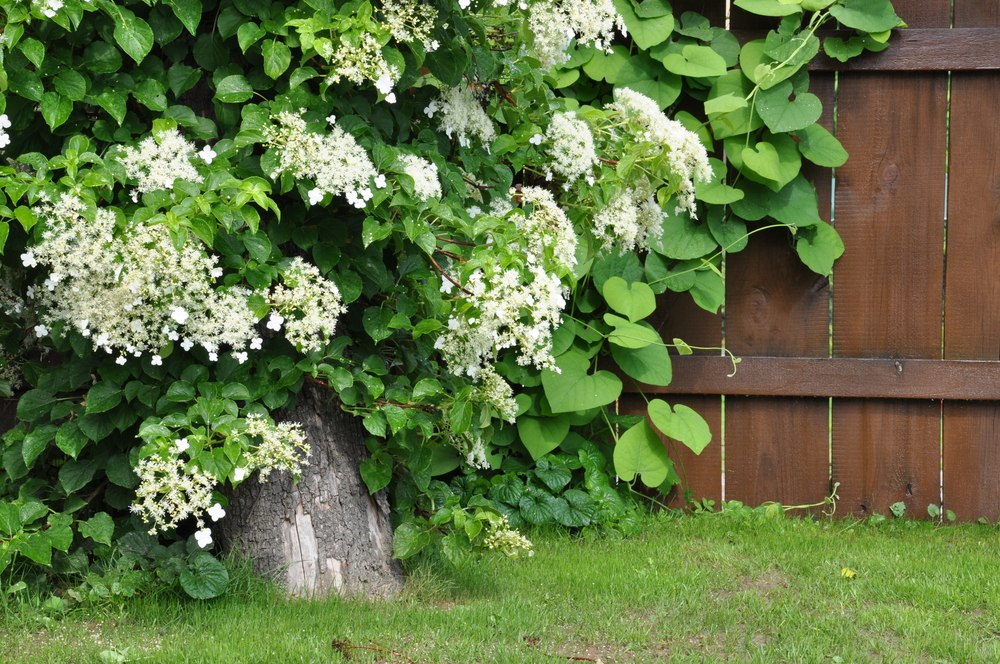
The climbing hydrangea vine is a shade-tolerant variety that is best planted in the spring. It has suckers, so it is a true climber that doesn’t need a trellis to support its growth.
This vine grows white lacy flowers that stay in bloom all summer. However, it takes this plant about five years to reach the flowering stage. After reaching maturity, it can reach a height of 50 feet, but it’s toxic to all pets.
The climbing hydrangea grows in USDA zones 4a to 8a and should be kept under control because it can become too heavy for the structure it’s attaching itself to. It thrives in full sun to partial shade as long as the soil is fertile, slightly acidic, and consistently moist.
7. Virginia Creeper
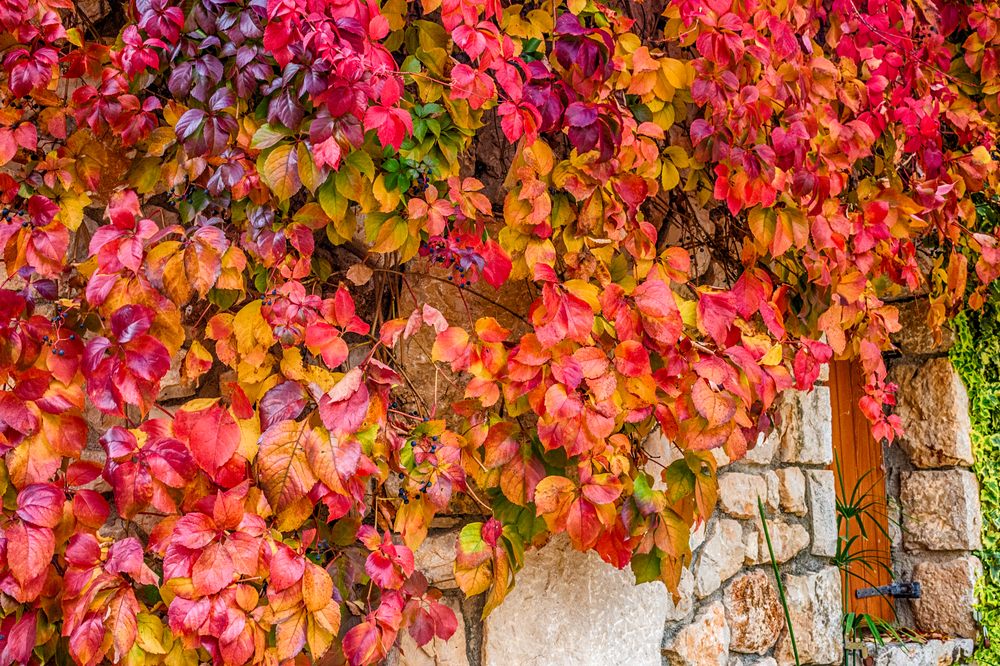
The Virginia creeper is a shade-tolerant relative of Boston ivy and can grow to reach a height of 50 feet. It’s a fast-growing vine with foliage that turns from green in summer to red or burgundy in fall, but touching this vine leads to skin irritation.
In summer, the greenish-white flowers appear and then turn into blue berries. Birds love these berries, but they contain oxalic acid, so they’re toxic to humans. The Virginia creeper can become invasive, as it shades nearby plants and trees. Removing this plant from walls or other structures after it gets established is challenging.
It grows in USDA zones 3 to 10 and needs full sun to achieve its impressive fall color. The vine is tolerant of different types of well-draining soil and needs regular watering until it gets established.
8. Morning Glory
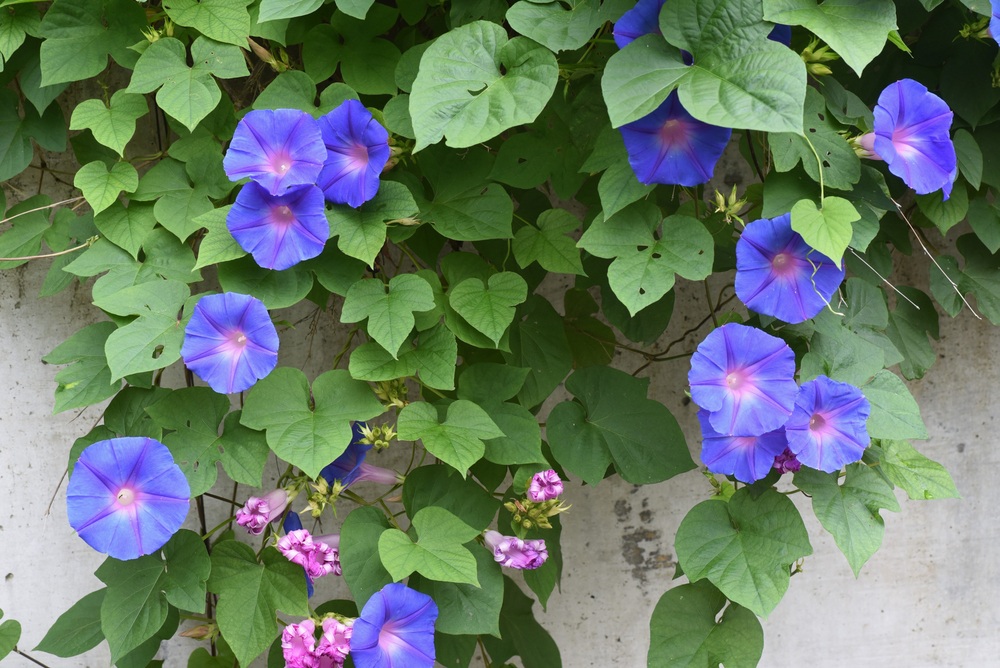
Despite the beautiful look of the morning glory vine, it’s toxic to people and pets. This pretty vine gets its name from the buds that twirl at night and unfold in the morning with fragrant blue, purple, pink, or even white flowers that attract hummingbirds and butterflies.
The morning glory vine is a fast-growing annual vine growing to be about 12 feet tall, so it needs to be kept under control. It can be easily started from seed in spring and blooms in summer and fall.
This vine needs full sun to extend the blooming season, and it prefers moist and well-draining soil. Therefore, regular watering and adding mulch to retain moisture is crucial, especially during the growing period.
9. American Wisteria
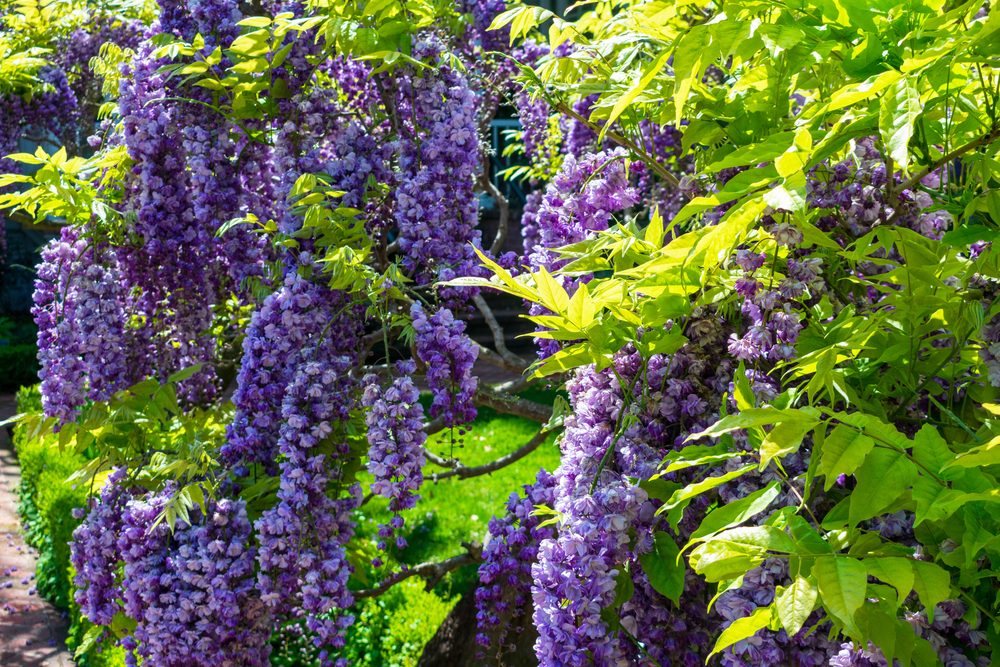
American wisteria is a non-invasive variety of the wisteria vine and can grow successfully in the southern parts of Wisconsin. It has dark shiny leaves and produces clusters of pea-like blue, purple, or white flowers that appear in spring and summer. Yet, it takes this vine about six years to reach maturity and start flowering.
A strong structure like an arbor or trellis is essential to support the weight of this vine, as it can be about 30 feet long. It needs full sun to flower, and regular pruning will help the flowers last longer.
The American wisteria thrives in USDA zones 5 to 9, growing in rich, moist, well-draining soil. Alkaline soil will make the leaves turn yellow.
10. English Ivy

Thanks to the aerial roots of English ivy, this resilient vine will spread as much as it can by attaching itself to various structures, sometimes reaching a height of 80 feet. It’s fast-growing and can quickly become invasive, and it’s mainly grown for its impressive evergreen foliage. Yet, in fall, it usually grows insignificant greenish-white flowers.
This vine held a special status in Ancient Greek and Roman cultures, as it was associated with the God Dionysus or Bacchus. It’s also grown as a ground cover or indoors as a trailing plant, but it’s toxic to pets and people.
The English ivy grows in USDA zones 4 to 13, tolerating partial shade to full sun. It can grow in poor conditions but prefers well-draining soil that shouldn’t be soggy.
Wrap Up
It’s not hard to find vines that can thrive in Wisconsin’s weather, but you should pay attention to their growing conditions. Some of these vines are more suitable for seasoned gardeners, while others are pretty resilient and beginner-friendly.
Yet, you always need to take care of your vines, as some of them can become too heavy for their support structures. Some vines can also shade your other plants and trees, so you must think carefully about where to plant them.





